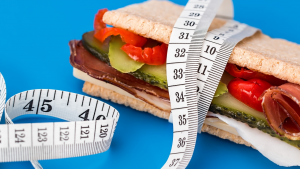Survey Of All Posts!

Suitable Web-Fonts
/ | Leave a CommentSelecting good fonts is a matter of design, getting suitable web-fonts a matter of knowledge. Not only, if we need some for special cases. With bootScore we can incorporate Google Fonts directly. We are even told how to host them locally, so we can bypass the notice in the privacy policy. Nevertheless, we have to get a little involved with Bootstrap as well: […]

Discreet References to Previous Posts
/ | Leave a CommentIn bootScore Toppings, I’ve already offered two slim landing pages: mylap-sp1rp1 and mylap-sp0rp1. Both show the important things first: The blog topic. And the most recent post. One of them additionally puts the most recent Sticky Post in front of the other. But if we nevertheless want to show our readers the one or other sticky post more, we need a solution for integrated discreet references to previous posts: […]

A Slimmed-Down Landing Page
/ | Leave a CommentUntil now, our slimmed-down landing page mylap.php — as a template linked to the WordPress page mylap — still shows the list of all posts. But our favorite reader had ‘prescribed’ us that she wanted to see only the most important on the initial page. And that at a glance. The most important thing in a blog is probably always the most recent post. Plus maybe the most recent ‘sticky post’, that is, the one that the author marked last so that it should always be shown at the top: […]

Context-Sensitive Sidebars: Stay Lean
/ | Leave a CommentWe need sidebars. For this, we have already made room. But we need different sidebars. Presenting the tag cloud makes sense only on the sidebar of the search page. There it can shorten the search in the set of articles. On the other pages, it distracts the reader. Conversely, the other pages need a ‘more’ button in the sidebar that leads to the survey page. In other words, we need context-sensitive sidebars — another means to focus: […]

Throw away, what distracts
/ | Leave a CommentMy pages are too full, my preferred reader says: She constantly gets something to click on another article. She understands why. I wanted to entice her to read on. Like a real news portal. But my content was not broad enough. I only want to talk about a few core topics. So, kill your darlings — throw away, what distracts — too much is just too much. […]

Your Specific Landing Page With bootScore
/ | Leave a CommentMeanwhile, I have implemented some features of bootScore. And I’ve promptly overloaded my site, as my preferred reader said. Do I need a specific landing page, I asked her back. She answered, that I — as far as she has understood — want to flexibly write about several different core topics. This would end up in a listed mishmash, of course! Should she herself pick out what belongs together? […]

Masonry Archive With 3 Columns: Less Is More!
/ | Leave a CommentA masonry list view is nicer. The original masonry archive from the bs Loop Templates lists the posts in four columns. Four columns with article openings provide a quick, good overview. And yet: without a sidebar, this won’t be a real ‘landing page’. After all, we want to be able to present the latest news to our readers ‘on the side’. Fortunately, there is a solution: the Masonry Archive with 3 columns: […]

A ‘Masonry’ As A Better Lookout
/ | Leave a CommentAfter having exhausted the images issue, it’s time to beautify the list of posts. Up to now we only know the form that bootScore’s index.php generates: a list of stripes, one for each article, the respective Featured Image in the left half, and in the right half the first lines of the article. How boring. But bootScore also offers a nicer way: a masonry as a better lookout: […]

bootScore Without Blurred ‘Featured Images’
/ | Leave a CommentI have already discussed bootScores blurred images. The problem was easy: In cooperation with WordPress, bootScore embeds images of size ‘medium’ in the post lists. And that even on large screens, where the browsers have to fill much more space than the images could do by themselves. Consequently, the browsers upsize the images that are too small — and blur them. Or, put another way: bootScore offers an excellent ‘Responsive Design’ when it comes to the texts. When it comes to the images, not (yet). Here, we offer a way towards bootScore without blurred Featured Images — with the help of HTML‑5: […]
